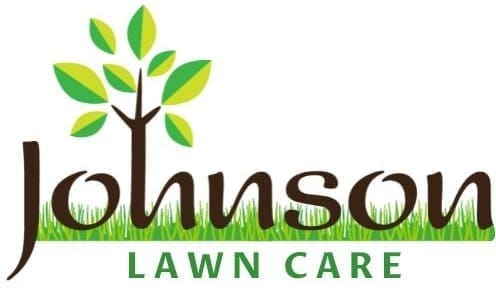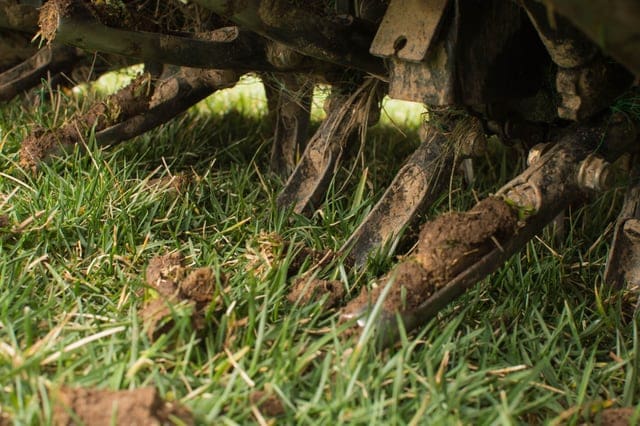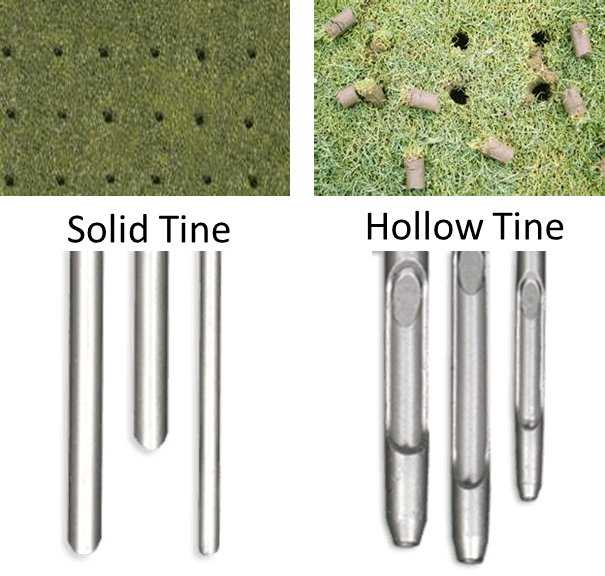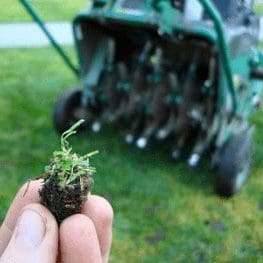Call 01793 625876 or BOOK ONLINE
All About:
Lawn Aeration
Expert Aeration
Outstanding Results!
As passionate horticulturists, we recognise the critical role that aerating your lawn plays in a comprehensive lawn care strategy. Aeration is more than just perforating the soil; it’s a gateway to revitalising your lawn’s ecosystem. While many DIY options exist to aerate a lawn, they often fall short of delivering the significant benefits that a professional aeration service can offer. That’s where our expertise makes the difference. As independent Lawn Care Experts, we have the flexibility to tailor our aeration services to each lawn’s specific requirements, steering clear of generic, off-the-shelf solutions. Our commitment is unwavering: to provide unmatched lawn care outcomes. We utilise top-tier lawn aerating equipment, akin to the technology gracing the world’s most prestigious golf courses. We don’t merely poke holes; we facilitate optimal root growth, enhance water absorption, and make room for vital nutrients to permeate the soil. Such a nuanced approach to lawn aeration is not commonly found—it’s a bespoke service that’s now within your reach. Together with our depth of horticultural knowledge, we aspire to elevate your lawn to new heights of vitality, lushness, and aesthetic appeal.
What is Aeration?
Lawn aeration is a strategic process wherein small holes are made throughout the lawn's soil, facilitating the easier flow of air, water, and essential nutrients directly to the grassroots. Over time, especially in high-traffic areas, soil can become compacted, creating a barrier that hinders these critical elements from reaching the grassroots effectively. Aerating your lawn breaks up this compaction, allowing the roots to breathe, expand, and absorb nutrients more efficiently. This process not only stimulates deeper root growth but also revitalises the lawn's overall health and appearance. Incorporating regular aeration into your lawn care routine ensures that your grass receives the foundational support it needs to thrive and flourish.
Why is Aeration important for my lawn?
Aeration addresses one of the often unseen challenges many lawns face: soil compaction. As the soil becomes densely packed over time, whether due to foot traffic, mowing, or natural settling, it can restrict the free movement of essential elements like water, air, and nutrients. These restrictions can stifle root growth and limit the grass's ability to thrive. By perforating the lawn with small holes, aeration breaks up compacted soil, allowing your lawn to breathe better. This improved airflow and circulation leads to deeper and healthier root systems, enhanced nutrient uptake, and better water infiltration. The result is a lawn that's not only more resilient to external stresses, such as drought or pest invasions but also one that boasts a lush and vibrant appearance. Aeration, thus, serves as a rejuvenating therapy for your lawn, bolstering its health from the ground up.
How can I tell if my lawn needs Aerating?
In our unwavering commitment to lawn care excellence, we've integrated aeration into all our Annual Lawn Care Programmes. Understanding its vast benefits, we are of the conviction that every lawn should experience aeration. Yet, there are distinct and nuanced signs that guide us in determining when a lawn might be in more pressing need of this vital treatment.
- Soil Compaction: One of the most direct tests involves trying to insert a garden fork or rod into the soil. If it's hard to push in or only penetrates a shallow depth, your soil might be compacted.
- Pooling Water: After a spell of rain or post-irrigation, if you observe water lingering on the lawn's surface instead of soaking in, it's a tell-tale sign that the soil might be too compacted for effective water infiltration.
- Thinning Grass: Lawns with compacted soil often have difficulty supporting robust grass growth. If areas of your lawn start thinning or show bare patches, despite regular care, it might be crying out for aeration.
- Dry and Hard Soil: Even after watering, if the soil feels exceptionally dry or hard to touch, it's likely that the water isn't penetrating due to compaction.
- Heavy Clay Soil: Lawns with clay-heavy soil are more susceptible to compaction. If you're aware that your garden has this soil type, regular aeration might be beneficial.
- Frequent Foot Traffic: Areas of your lawn that endure regular foot traffic—be it from playing, walking, or even parking vehicles—can become compacted over time. These high-traffic zones often show signs of stress sooner and may benefit from aeration.
- Previously Laid Turf: If your lawn was recently established using turf, especially if the soil preparation wasn't extensive, the underlying layers might compact more quickly, necessitating aeration.
How often should my lawn be aerated?
Aeration is akin to giving your lawn a breath of fresh air. While specific needs may vary, adopting a proactive stance towards aeration often yields the best results, which is why we include it as standard in all of our Annual Lawn Care Programmes. Whilst lawn enthusiasts and connoisseurs often aerate several times per year, aerating your lawn at least once a year provides consistent relief from soil compaction, ensuring that water, air, and nutrients consistently reach the grassroots with ease. Especially in areas with clay-heavy soils or high foot traffic, regular aeration is crucial to counteract the natural tendency towards compaction. Moreover, annual aeration prepares your lawn to better handle the stresses of changing seasons, from the summer's heat to the winter's cold. By committing to this routine, you not only bolster the health and resilience of your grass but also maintain its lush and vibrant appearance year-round.
How does aeration differ from scarification?
Both aeration and scarification are integral to maintaining a healthy lawn, but they target distinct aspects of lawn care. Aeration focuses on alleviating soil compaction, where small holes are made throughout the lawn to enhance the flow of water, air, and nutrients to the grass roots. Its primary goal is to improve the soil structure, promoting deeper root growth and ensuring essential elements penetrate effectively.
Scarification, on the other hand, concentrates on the lawn's surface. It involves mechanically removing layers of thatch, moss, and organic debris that can accumulate and obstruct the free flow of these vital elements at the base of the grass. The main aim of scarification is to combat thatch buildup, improving the overall health and appearance of the lawn's surface.
In essence, while both processes rejuvenate the lawn, aeration dives deep to invigorate the soil and root system, whereas scarification refreshes the lawn's surface, ensuring it remains unobstructed and primed for optimal growth.
When is the best time to aerate my lawn?
Timing is paramount when it comes to lawn aeration. The most opportune periods are typically during the early autumn or late spring, coinciding with periods of vigorous grass growth. Undertaking aeration at these times ensures the grass can heal and utilise the increased access to air, water, and nutrients efficiently, promoting robust growth and a fuller appearance. Aerating in early autumn prepares the lawn for the dormant winter phase, helping it to build resilience against the colder months ahead. Conversely, spring aeration revitalises the lawn following winter, priming it for lush growth throughout the summer. It's vital to avoid aerating during extreme weather conditions like droughts or heavy rains, as these can stress the lawn and impede recovery. By choosing the right time for aeration, you're investing in the future health and beauty of your lawn, ensuring it remains a vibrant and inviting extension of your home throughout the year.
What should I expect after aeration?
It's a common concern for homeowners to wonder about the appearance of their lawns post-aeration. Initially, the process will leave small, visible holes scattered throughout the lawn and, in the case of Hollow-Tine Aeration, will leave small soil plugs on the surface. However, these signs of aeration are temporary and an indication of the rejuvenation process in action. The holes allow for enhanced airflow, water infiltration, and nutrient absorption, all vital for the health of the grass. As for the soil plugs, they usually break down naturally with rainfall and mowing, reincorporating valuable nutrients back into the lawn. Within a few weeks, the holes will start to disappear as the grass grows vigorously, benefiting from the improved conditions. The end result? A healthier, more resilient lawn that looks lush and green. In essence, while there might be short-term aesthetic changes, the long-term benefits to your lawn's health and appearance far outweigh any initial visual concerns.
What is the difference between hollow tine and solid tine aeration, and which do I need?
Hollow tine and solid tine aeration are two primary methods of revitalising your lawn, each with its distinct approach and advantages. As lawn care experts, we employ both methods depending on the specific needs of your lawn:
- Hollow Tine Aeration: This method involves removing small plugs or cores of soil from the lawn using hollow tines. By extracting these plugs, it creates open channels that enhance air, water, and nutrient flow to the grassroots. A primary benefit of this technique is the reduction of soil compaction, facilitating better root expansion. Furthermore, the removed plugs break down on the surface, naturally reintroducing beneficial microorganisms and nutrients back into the lawn.
- Solid Tine Aeration: Employing solid spikes or tines, this method punctures the lawn without removing any soil. It's gentler, creating channels for improved element flow without causing as much immediate visual disruption to the lawn's surface. It's particularly beneficial for lightly compacted soils or for more frequent aeration needs, offering quick recovery.
- Which should you have? The choice between hollow and solid tine aeration depends on your lawn's specific needs and is something we will assess and discuss with you at our initial meeting. For lawns suffering from severe compaction or those with a thick thatch layer, hollow tine aeration might be more beneficial. On the other hand, if you're looking for a less intensive treatment or are aiming for regular maintenance, solid tine aeration could be the way to go. With both options at our disposal, we can ensure your lawn receives the very best care for it's exact needs.
